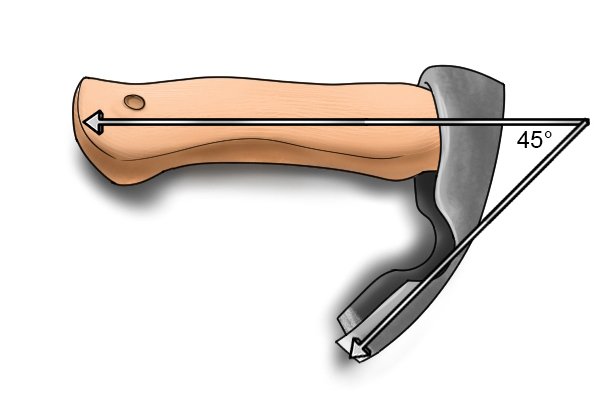
The handle itself is just slightly over 14 inches long and is made entirely out of high-strength fiberglass that shaves a lot of weight from this tool compared to other options. This allows the head to maintain a razor sharp edge (with just a little bit of work necessary on your behalf to get that sharp) without losing any of the durability you’d expect for something that can beat up on hardwoods like oak.

The head of this adze is 5 ½ inches long, features a slightly steeper angle than the other adzes that we have highlighted already, and is made entirely out of drop forged heavy duty steel construction materials. Very much a modern reimagining of the traditional adze, this tool has the exact same design features of the traditional adzes made hundreds of years ago – thousands of years ago, really – but has replaced all of those parts with modern construction materials and engineering. The overwhelming majority of modern adzes are going to be hand forged options as opposed to mass-produced materials which the gives them a little bit of extra charm, particularly for those that want to use these the way that early craftsmen use them in their trade. Arctic explorers in particular use this tool because it’s easy to chop steps into glaciers or other ice structures. Instead, this tool gets a lot of use by adventurers and explorers that want a multipurpose tool that they can depend on in a variety of different situations. Today, an adze may not be used as often to hollow out a canoe, work wood for other tools or construction materials, or be all that useful in the garden or around the homestead the way it would have been more than 100 years ago. It seems to be a design that was universal in its adaptation, with early humans making the most of this tool pretty much all over the world even though they warrant in communication with one another. Stone Age adzes have been found throughout Europe but these tools have also been found in Australia, in North America, and even in ancient Egypt.

It has a pretty large, rectangular head on it that can be sharpened to a point – but it sits at a right angle to the handle as opposed to perpendicular the way that a traditional axe head does, giving it more of a hoe shape than anything else.Īvailable in an almost infinite amount of shapes, sizes, blade configurations, and overall weights (as well as made out of pretty much every construction material imaginable), the whole idea of this tool is to shave away at the material that you are looking to work – almost exclusively would – especially if you’re looking to hollow out curves or want to shape and smooth out flatter surfaces.Īs mentioned above, this tool predates pretty much any other tool archaeologists have ever discovered. Featuring an easy to manipulate handle that can be either pretty short your rather long (depending on how you plan to use the adze), the shape of this axe like tool is very distinct. This tool dates all the way back to the earliest tools ever made by humans, all the way back to the Stone Age, and remains one of the most important hand tools ever devised. You have to be a pretty handy tool if you are going to stick around for as long as the adze has.


 0 kommentar(er)
0 kommentar(er)
